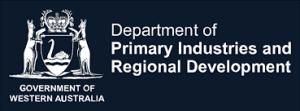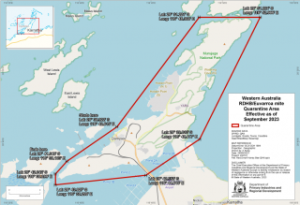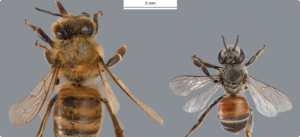 Red Dwarf honey bee (Apis florea) found in Australia
Red Dwarf honey bee (Apis florea) found in Australia
We are here to share current happenings in the bee industry. Bee Culture gathers and shares articles published by outside sources. For more information about this specific article, please visit the original publish source: https://www.agric.wa.gov.au/red-dwarf-honey-bee
DPIRD is investigating the detection of the exotic pest red dwarf honey bee (Apis florea) discovered on the Burrup Peninsula near Karratha.
Red dwarf honey bees are known to be a vector for numerous exotic bee pests, including brood diseases, internal and external mites (Euvarroa-close relative of Varroa), and bee viruses.
The department is calling on the State’s beekeepers and land managers to monitor their area for any unusual bees or nests.
Quarantine Area
A Quarantine Area has been declared for the Burrup Peninsula in the Pilbara (see map) to support a biosecurity response to eradicate Red dwarf honey bee. Beekeepers with hives, equipment or those who have collected swarms on the peninsula are not permitted to move them outside the Quarantine Area to prevent the pest from spreading. This QAN has been extended to 30 June 2025. Please see the QAN, along with amendments and maps on the right-hand side of this page.
Affected bee keepers are asked to contact DPIRD’s Pest and Disease Information Service (PaDIS) to advise of hives in the area. Workers, residents, businesses and visitors to the Quarantine Area are required to report observations of unusual bees to the PaDIS hotline or via the department’s MyPestGuide® Reporter app to support surveillance.
 Distribution
Distribution
Dwarf honey bees are native to Asia, commonly found in tropical areas.
The Red dwarf honey bee is naturally distributed from the Indian subcontinent throughout Southeast Asia through to the Malaysian peninsula.
The dwarf honey bee is not known to be present in Australia.
Impact
Red dwarf honey bees are social bees which live in colonies of at least 3,000 insects. They migrate, swarm, and abscond readily, making them a major threat for exotic incursions and to the Australian environment.
One of the major risks for Australia is that red dwarf honey bee (Apis florea) is host to a range of bee brood diseases, parasites, and viruses that may impact European honey bees.
To access the complete information document go to, https://www.agric.wa.gov.au/red-dwarf-honey-bee









